Post by contributor Faith Watson
I quit buying store-bought bread around Christmas of last year, and it had nothing to do with going gluten-free.
In fact, my family of four has continued to eat bread nearly every day since then, homemade sourdough bread to be precise.
Do I run a bakery? (Heavens, no!) Do I have an amply-spaced bread-making kitchen? (I wish…and I don’t even have a KitchenAid mixer.) Am I some amazing, super-mom? (By no means!)
I simply made a decision to change one of my family’s food habits, and we jumped into the world of homemade sourdough bread. I do not claim to be an expert or even a sourdough purist.
Just a bread-lover who met sourdough and fell in love.
How It Happened
Now, before you envision me bound to my kitchen tending a starter or making bread every day, I want to invite you to see how homemade sourdough is not all-consuming, and can actually fit into a busy schedule.
After purchasing a sourdough starter online last autumn, it took me a few months to work up the courage to actually do something with it.
I was intimidated and reluctant because of the fear that my kitchen would be overwhelmed by a bubbling, growing monster of a starter that I wouldn’t be able to manage.
The initial adjustment period of activating the dried starter was slightly overwhelming, and I scoured the Internet for recipes to use up the discarded portion of the starter (not active enough to rise bread but perfectly usable for things like pancakes, crackers, cookies, and crepes).
Within a few weeks, I was able to get into an easy routine that fit into my family’s daily life and weekly activities.
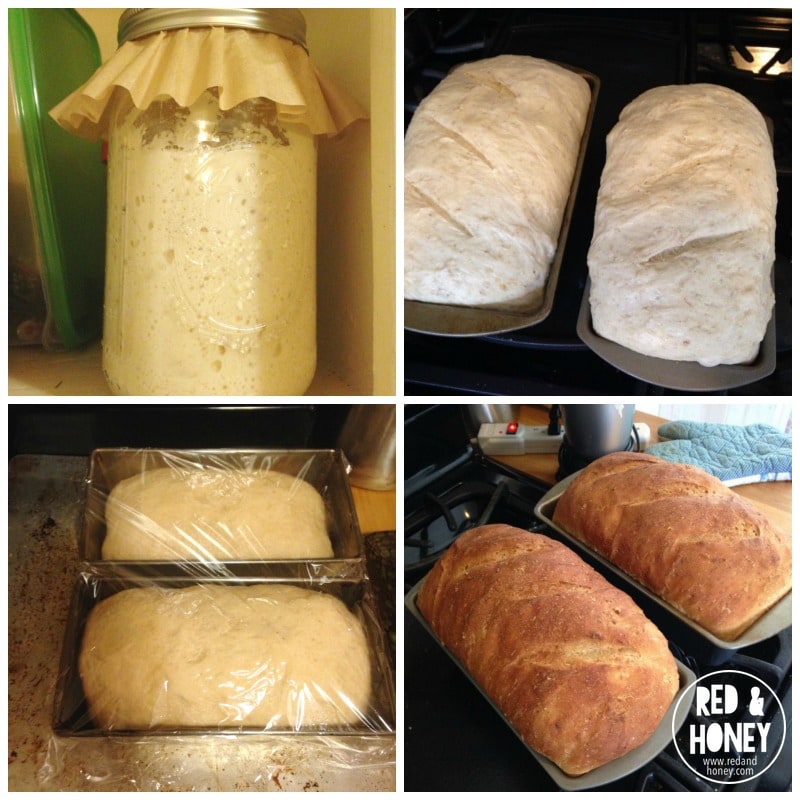
Why Sourdough?
You may be wondering “Why Sourdough?” There are plenty of sources for the details of why sourdough is a healthier bread, but the basics have to do with fermentation making the bread easier to digest and the nutrients in the grains more usable by our bodies. Here are a few links that go into more detail:
Why You Should Eat Sprouted Grains or Sourdough Bread | Cultured Food Life
Sourdough 101: Crash Course | Don’t Waste the Crumbs
What, How, and Why of a Sourdough Starter (free video & instructions) | GNOWFGLINS
My personal “why” developed as I learned more about the health benefits of fermented foods and began incorporating milk kefir, kombucha, and cultured vegetables into our diet. However, sourdough was always on the someday list because it seemed like a more complicated endeavour.
Another big “why” had to do with the excessively long ingredients list even on the so-called healthy store bread: preservatives, random words I couldn’t pronounce, high fructose corn syrup hidden in the middle of the list, and other things that, honestly, made it less real food and more junk food.
The “why” that finally moved me from talk to action was the encouragement of sourdough-loving friends.
In the middle of last December, one friend literally stood in my kitchen and ripped open the dried starter package, mixed it up, and said: “There. It’s easy. You’ll love it!” That was 9 months ago, and she was right. (Thanks, Kirsten!)
Another friend sent me the link to her favorite sourdough sandwich bread recipe, and on the same blog, I discovered a collection of sourdough recipes, with Cheese Bubble Bread and English Muffins being especially delicious.
Note: If you’re someone who needs to be gluten-free 100%, my friend Donielle has an excellent gluten-free sourdough bread recipe on her site!
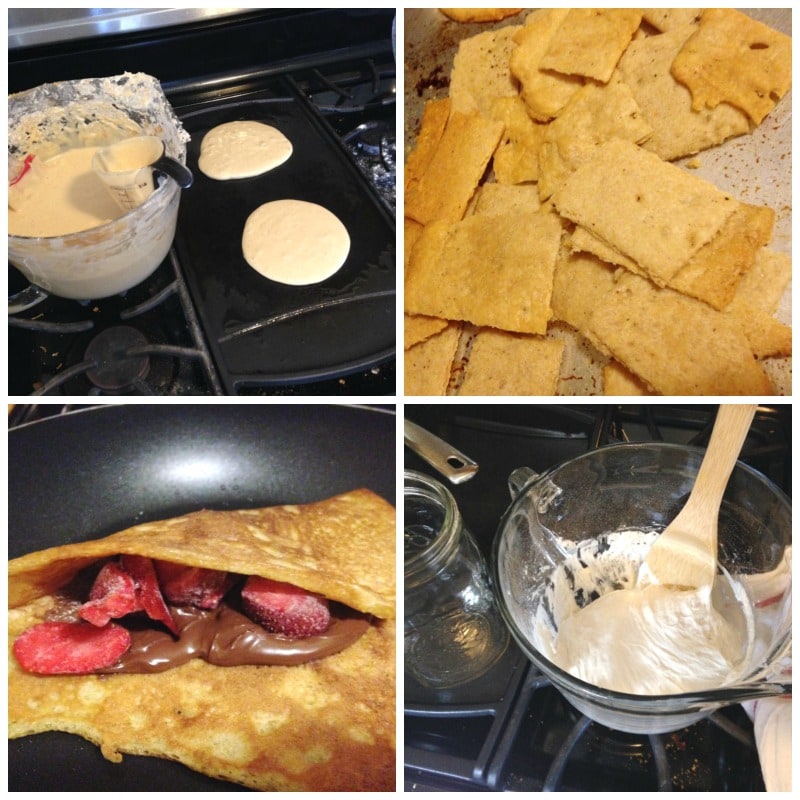
I quickly learned that sourdough, like any homemade bread, takes time and work, but with a little planning ahead, really doesn’t take too much extra time. And the results are amazing…imagine melted butter dripping from the crust of a steamy slice of fresh-from-the-oven bread! It’s so worth it.
Need some encouragement to dive in? Here are my top six tricks to make homemade sourdough easy.
1. I keep my starter in the fridge until I need to make bread, which is about once a week.
I pull out the starter from the fridge the night before and feed it more flour and water, making sure to reserve enough starter the next morning to put back into the fridge to rest for another week. This has been the easiest way to make sourdough a natural part of our lives. I make it as needed and am not overwhelmed by more starter than I need.
2. I plan to be around the house on bread-making day, or I time my errands to be home when I need to do the next step.
I have forgotten or let the bread rise too long a few times. It usually just ends up making the bread not as pretty, but no noticeable effect on the taste.
3. Some days, I have placed my mixed bread dough into the fridge for the night.
Refrigeration slows the fermentation process, and in the morning, I just let the dough come to room temperature and then proceed with shaping the loaves, letting them rise, and baking as usual.
4. Small loaves freeze well and are perfect with soup or chili.
With the chill of autumn in the air, it’s time to make partially-baked, free-form loaves to have on hand. I simply pull them from the freezer and pop them in the oven until the middle is warmed through.
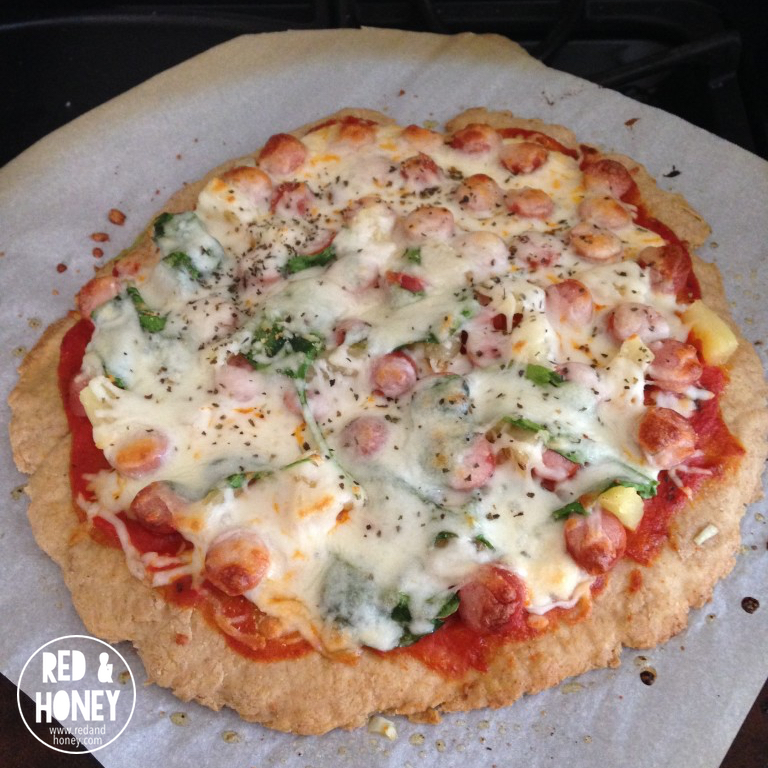
5. After a few months, I started just eye-balling the measurements when feeding the starter.
Some recipes I found talked about sourdough hydration amounts, and I was so confused (honestly, still am). If you’re a sourdough purist, you might cringe at my ignorance, but whether my sourdough is on the wet or dry side, as long as it’s bubbling and making my bread rise, I’m content!
6. Sourdough is quite forgiving.
Recently, my starter sat for more than two weeks before I had a chance to feed it and make more bread. When I pulled the starter from the fridge, there was a thin layer of liquid on top. No big deal, I just mixed it back in and fed my hungry starter as usual. It was happy and bubbling in no time.
Here’s the thing: I do what works for us, right now.
Someday, hopefully, I will use organic flour or better yet, grind my own flour from organic wheat berries. For now, I use regular unbleached, enriched white flour and white whole wheat flour.
Someday, I’ll have a KitchenAid mixer (*cough*Christmas present idea). For now, I stir by hand with a wooden spoon.
I’m not an artisan sourdough baker. I’m just a mom on a journey trying to make small choices toward better health. And I love my sourdough bread.
You will too. It’s easy. Try it!

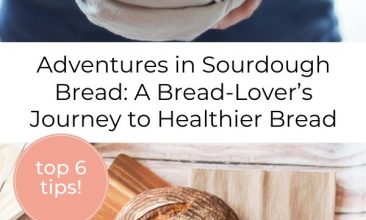

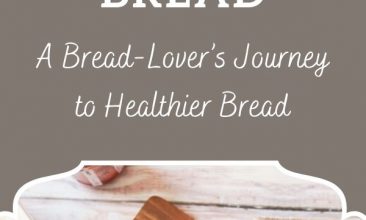

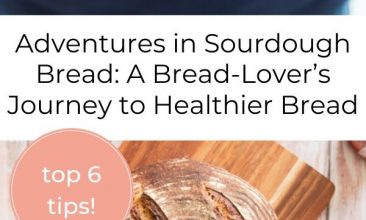


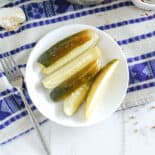
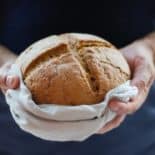



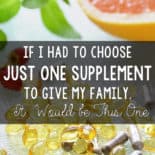
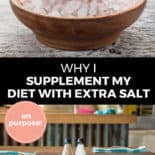

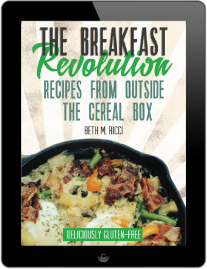
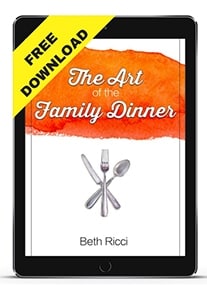
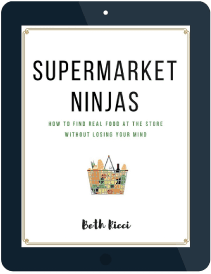
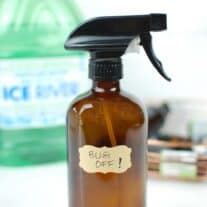

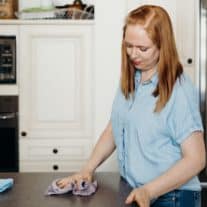




Salania
Can you tell me the name of the starter kit you bought and where? I’ve seen different starter kits and I don’t know which one to choose bc they have different ingredients. Thanks!
MamaV
So I went to an Ethiopian restaurant last night and had teff sourdough bread. It was super yummy and all whole foods! It does look like a non-wheat sourdough starter is a little higher maintenance, but I might give it a try!
MamaV
I tried sourdough, hoping gluten was not my problem… It didn’t work out… Turns out even the best quality bread still made me feel yucky. What a bummer 🙁
Beth
Oh that is a bummer! I’ve heard many people talk about how they felt different when eating bread in Europe, as opposed to here in North America. Have you had the opportunity to try that, and noticed any difference?
MamaV
I HAVE heard that, but haven’t had the chance to try it. I would love it if there were bread I could eat 😉
Jennifer
I’ve never made sourdough bread before so I’m curious. Do you think I could use Einkorn flour to in the starter as well as the actual recipe?